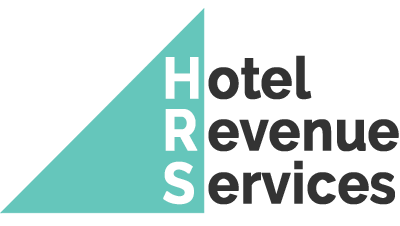- fixed capacity;
- time-variable demand; and
- a limited inventory.
Revenue management strategies can be applied in any hospitality-related industry, such as: restaurants, meeting venues, spas, and sports facilities.
The Revenue Manager
The Revenue Manager develops an enterprise-wide approach to maximises asset benefits. Their intervention delivers blended occupancy and real-time analytics, to realises the most efficient and sustainable revenue strategy. Rapid decision-making enables top-line income to be maximised for each individual asset (for example at individual hotel level).
Revenue Management Application
Having a dedicated Revenue Manager will deliver:
- A detailed model of the existing revenue baseline compared to a ‘best-realistic- outcome’ result;
- Construction of the revenue management strategy and its components parts and mapping of the dependencies;
- A deep understanding of the revenue management strategy and its benefits to the organisation;
- Focus on the multiple and variable levers of revenue management, and clarification as to how they can be manipulated to increase revenue;
- The identification of the critical success (and risk) factors in an enterprise;
- A mitigation strategy to manage those risks which could harm revenue streams; and
- Insights in to the non-traditional methods in which revenue management techniques can be applied to increase revenue.
Forecasting and Controls
The Revenue Manager will create a forecast model of the potential revenue up-lift potential based on the ‘as-is’ position. A number of tools aid this process, including:
- Building booking curves;
- Account for “pick-up”;
- Segmentation demand modelling by market, group, and channel; and
- Calculation of error rate and account for its impact.
The impact of availability controls, including length-of-stay management, on revenue management and how they can be leveraged will also be considered.
Pricing Strategy and Distribution Channels
The Revenue Manager will set the right price for an asset, at a moment in time, and develop a differential pricing engine for each customer type. They deploy multiple distribution channels and data source strategies to aggregate market conditions and so price more effectively. With fluid booking conditions, comes the need to have variable pricing and an intuitive discounting capability. Pricing elasticity, optimal price mix, perceived fairness, and congruence with positioning and sales strategies must also be considered.
Managing Overbooking
An important element of the Revenue Manager’s role is to create a group forecast and explore yieldable (and non-yieldable) business. This includes analysing incremental group costs and revenue opportunities. Exploring and creating models that calculate displacement costs and contribution margins to determine which channels are the most profitable, are a critical success factor.
Non-Traditional Applications of Revenue Management
We can apply revenue management principles and concepts to most hospitality-related industries, including restaurants, meeting spaces, spas, and golf facilities. Following a step-by-step process to develop, implement, and monitor a revenue management strategy will deliver demonstrable growth at the top-line.
Key Benefits
- Refine the practice of revenue management to include other aspects of the hospitality industry
- Extend the practice of revenue management to other industries
- Lead a revenue management effort, from gathering baseline data to monitoring results post-implementation
The role of the forecast in a comprehensive revenue management strategy, includes the selection of the best type of forecast model and understanding the impact of forecasting on other functions such as labour scheduling and purchasing.
The following tools inform forecasting decision-making:
- Approaching to the mechanics to create an accurate forecast.
- Build booking curves; account for “pick-up”; segment demand by market, group, and channel; and calculate error and account for its impact.
- The impact of availability controls, including length-of-stay management, on revenue management and how they can be leveraged.
Key Benefits
- Explain the role of forecasting in hotel revenue management
- Create a forecast and measure its accuracy
- Apply length-of-stay controls to their hotel
- Manage availability and make rate recommendations based on demand patterns
Outcomes
- Accurate Forecasts Count
- Forecasting Step by Step
- Forecasting for Markets and Groups
- Forecasting Error
- Rate Recommendations
- Length of Stay
- Set the right prices, develop rate fences (differentiate prices by customer type), and use multiple distribution channels to manage price more effectively;
- Evaluate the impact of variable pricing and discounting on revenue management in the context of price elasticity, optimal price mix, perceived fairness, and congruence with positioning and sales strategies;
- Constantly monitor channel performance as it is an essential tool for controlling differentiated pricing, maintaining rate fences, and increasing revenue; and
- Management distribution channels including direct sales, agencies, the Internet, and opaque pricing channels.
Key Benefits
- Use variable pricing strategies to increase revenue
- Develop effective rate fences
- Manage prices using distribution channels
Outcomes
- Right Price Matter
- Optimal Price Mix
- Rate Fences
- Perceived Fairness
- Distribution Channel Management
- Protect the business from the no-shows and generate increased revenue by overbooking;
- Develop a strategy to cope with overbooking, and manage the associated issues;
- Evaluate groups and determine which rates to charge;
- Build a successful overbooking strategy including no-show forecasting, model no-show rates, arrival uncertainty, pricing policies, and cancellation forecasts;
- Explores the risks of overbooking and presents strategies to minimize costs and mitigate customer impact; and
- Create a group forecast and define yieldable and non-yieldable business and incremental group costs and revenue opportunities which calculate displacement costs and contribution margins to determine which groups are most profitable.
Key Benefits
- Develop an overbooking approach
- Manage issues associated with overbooking
- Evaluate groups
- Determine appropriate group rates
Outcomes
- The Problem of No-Shows
- Forecasting No-Shows
- Developing an Overbooking Policy
- Group Management Decisions
- Calculating Group Rates
- Group Forecasting

